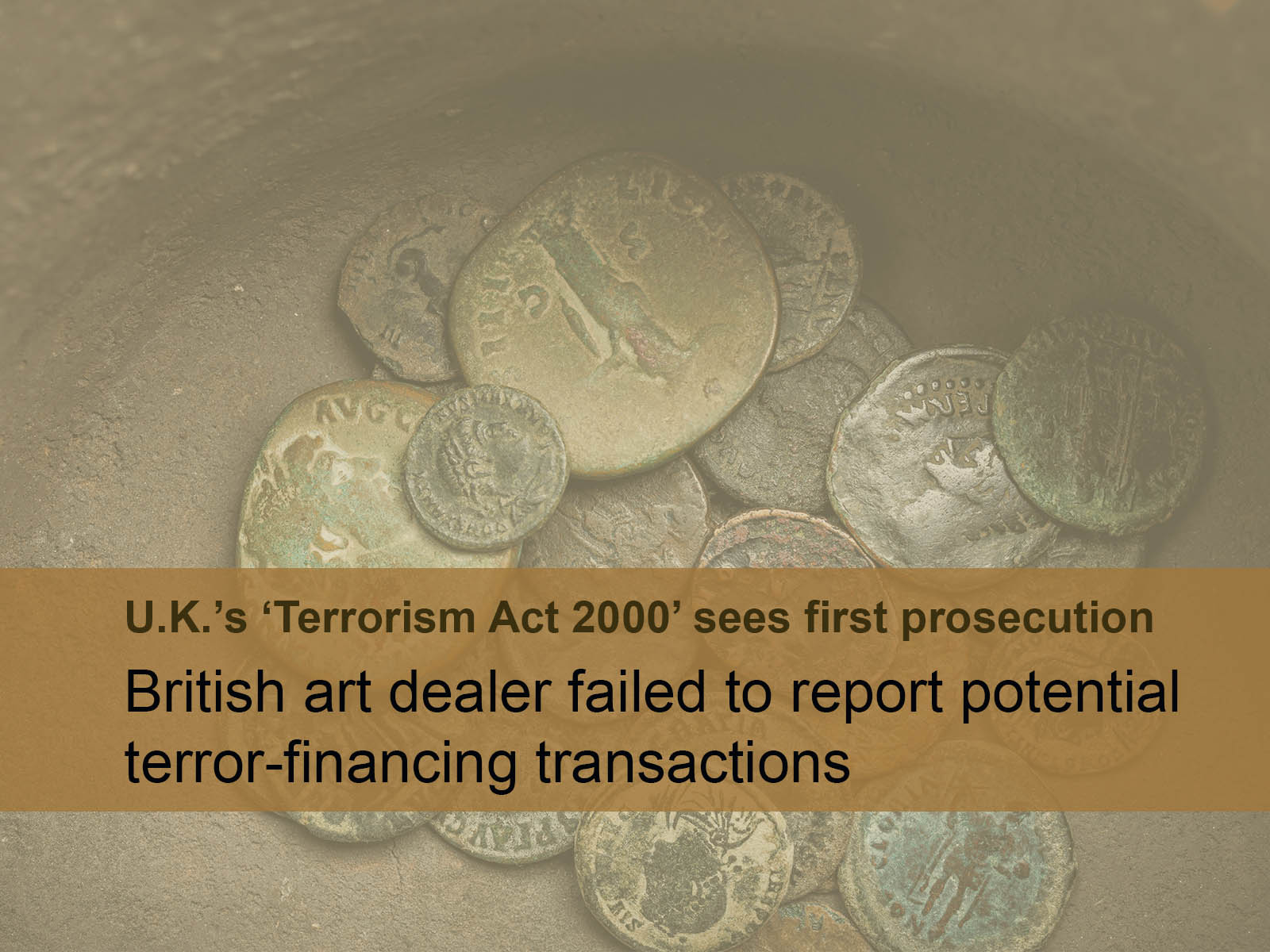
How terrorists launder funds through antiques—and what Compliance Officers must know
In early May 2025, art expert Oghenochuko “Ochuko” Ojiri—best known from BBC’s Bargain Hunt and Antiques Road Trip—pleaded guilty to eight counts of failing to disclose transactions with a suspected Hezbollah financier. Between October 2020 and December 2021, Ojiri sold roughly £140,000 of paintings, prints and bronzes to Nazem Ahmad, a dual U.S.–U.K.-sanctioned individual accused of laundering terror-related funds through high-value art and blood diamonds.
This landmark case marks the first prosecution under section 21A of the Terrorism Act 2000 in the regulated art market. According to The NY Times, Britain’s art sector became a regulated sector under British law in January of 2020.
How terror financiers exploit the art market
Terror financiers target art and antiques for three key reasons:
1. Opaque Valuations: No central price index makes it easy to over- or under-declare values.
2. Fragile Provenance: Paper trails can vanish or remain incomplete when items cross borders and change hands privately.
3. Complex Ownership Structures: Front companies, nominee collectors and shell entities conceal ultimate beneficiaries.
In Ojiri’s case, he chose not to report transactions with a suspected financier of terror. According to a BBC report, Ojiri told investigators he did not support terrorist activity and was sorry for what he had done. Prosecutors allege that Ojiri had sought Compliance advice and knew of the risks but that he proceeded with the art sales and did not report the transactions.
Nazem Ahmad, the purchaser of the art and diamonds, is a high-profile figure in art and first made a U.S. sanctions listing in 2019. Investigators in various jurisdictions assert that Ahmad used a network of corporate vehicles to acquire over $160 million of art and diamonds—and he shipped works to Dubai, Beirut and Abu Dhabi to obscure transaction trails. Despite clear online reporting of Ahmad’s sanctions, including a U.S. designation in 2019 and a U.K. freeze in April 2023, Ojiri pressed ahead without filing Suspicious Activity Reports.
Core AML/CTF challenges in the art sector
Customer due diligence gaps
Art dealers often rely on basic identity checks and business-as-usual paperwork. Without robust beneficial-ownership screening, dealers miss nominee layers that terrorists exploit. Best practice calls for verifying each beneficial owner through independent data sources and conducting PEP and sanctions screening on all parties, including intermediaries.
Limited suspicious-activity reporting
Section 21A of Britain’s Terrorism Act 2000 now obliges dealers to report suspicions of terror financing. Yet this case shows how even seasoned experts can skirt reporting duties. Firms must embed clear escalation protocols and train all staff on red-flag indicators—such as a buyer who insists on secrecy or leverages multiple corporate entities.
Inadequate enhanced due diligence
Transactions above local reporting thresholds or involving high-risk jurisdictions require Enhanced Due Diligence (EDD). This might include measures like obtaining independent valuations and provenance certificates. Other key elements might include interviewing key individuals, documenting conversations, and reviewing shipment routes and intermediary invoices.
In Ojiri’s gallery, advice to Ojiri from a third-party compliance consultant went unheeded, according to investigators. A strong EDD framework would have surfaced Ahmad’s sanctions status and halted the sales. But that presumes that a seller wants to remain compliant with AML and terror-financing regulations.
Best-practice responses & industry guidance
For sellers and financial institutions that want to strengthen their AML and CTF Compliance practices, industry guidance and various authorities offer detailed practices to follow. Perhaps the most fundamental is using a strong Risk-based approach that considers transaction size, client KYC/CDD and screening details, and geographic factors. Institutions can also leverage guidance from sources like FATF and their national financial-crime authorities.
Finally, today’s modern AML solutions provide automated and standardized workflows for Suspicious Activity Reporting. And organizations can leverage staff training and audits to confirm their adherence to regulations related to money laundering and terror financing.
The Ojiri prosecution underscores the art market’s vulnerability to terror financing and the desire to conduct transactions regardless of Compliance concerns. Dealers and their financial partners must close gaps in CDD, EDD and SAR filing if they wish to uphold the integrity of cultural trade. By embedding clear protocols, following international guidance and maintaining rigorous audit trails, art vendors and financial institutions can guard against the misuse of art and antiques for illicit ends.


